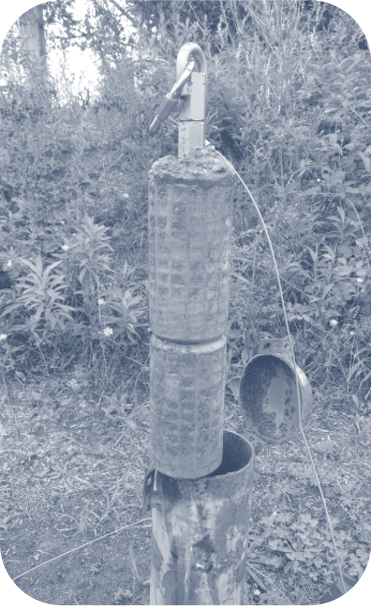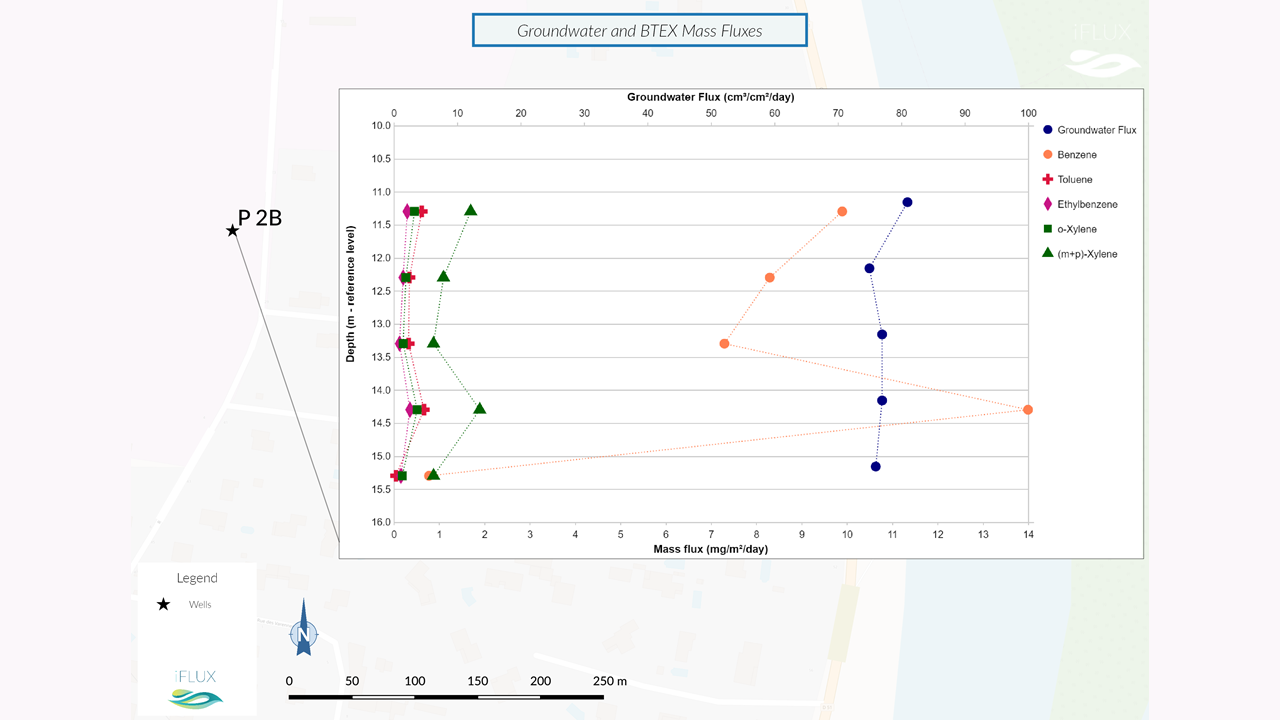Case Study
Multi-level sampling to determine the migration risk of BTEX contaminants

iFLUX Sampler
BTEX Contamination
Petroleum/Oil industry
Ineris
Lyon, France
Our value
Risk assessment at industrial brownfield site
Vertical flux differentiation uncovers contamination dynamics
Active source zone dominates over permeability
Situation
Due to activities of an oil company, the soil at this Brownfield site was contaminated with BTEX. Ineris, a semi-private institution that investigates industrial risks, took groundwater samples to measure the contamination. The Brownfield project was in the vicinity of Lyon, near the Saône river. It was therefor important to understand the migration risk of the contamination towards the river Saône.
Sampling
The surface area of the site was approximately 2 hectares. Five samplers with both water flux and contaminant mass cartridges were installed at several depths in a long-screened (from 8 to 16 m-bgl) monitoring well. Given the high expected flow but relatively low concentrations, the samplers were installed for a period of 20 days for the water flux and 112 days for the mass flux. The depths at which they were placed were between 11 and 15,3 meters bgl. The mass flux cartridges have been analyzed for BTEX (Benzene, Toluene, Ethylbenzene and Xylene).

"The iFLUX data combined with traditional measurements gave new insights into the migration risk of BTEX at this Brownfield site."
Challenges
How to asses dynamics of contamination:
- Stratification of contamination flux?
- Stratification of flow velocity?
- Spreading risk of contamination towards the Saône?
The Solutions
iFLUX provides insight in underground movement of contamination:
- Multi-level flux samplers at different depths in same monitoring well enable measuring stratification of the contamination dynamics
- Measuring dynamics of groundwater and contamination gives better insights in whether and how the contamination is spreading
- Mass fluxes indicate spreading risk towards river
The Result
Previous groundwater analysis results showed relatively low BTEX concentrations. This was probably due to dilution in the long-screened wells. These results only reflect average concentrations weighted by the contribution of each soil layer in front of the screen to the total concentration in the well. From the results of Darcy flux measurements, it appears that the maximum velocity was found at the depth of 11.16m-ns and was 81cm3/cm2/day. In contrast, the results of the mass flux measurements indicated that the highest fluxes were detected at 14.16 m-ns for all pollutants measured.

As shown by the stratification of the mass fluxes in the graph, the assumption that the highest spread of pollutants occurs in the most permeable layers is not correct. In this case, the iFLUX samplers were able to detect and identify a deep active source zone. Relative high mass fluxes were measured at shallow depth compared to the two underlying measurements. This indicates the activity of a residual but still active shallow source.
By combining conventional sampling data with flux results, alternative interpretations regarding the dynamics and stratification of the pollution were made possible. Based on this data, the groundwater model, used to assess pollution spreading risks towards the Saône, was adjusted. The measured mass fluxes indicated a spreading risk towards the river.
See how iFLUX will help your project.
Get in touch to review how the iFLUX Sampler will support your project.